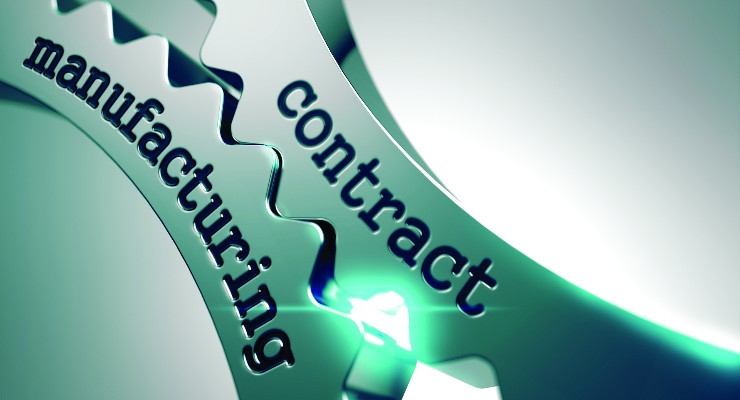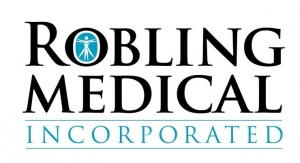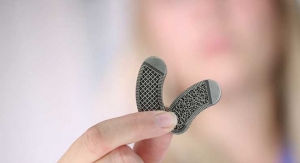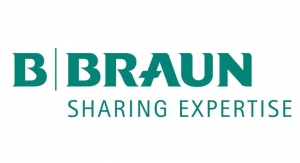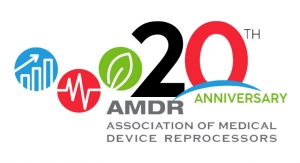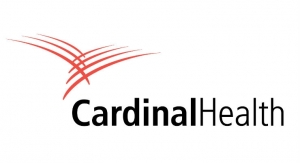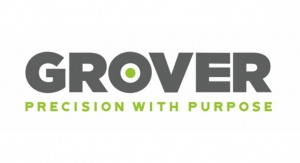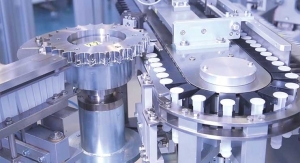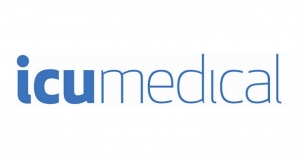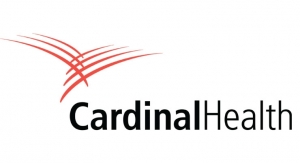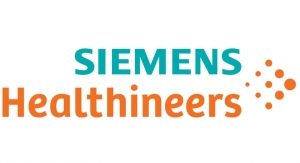Tony Freeman, President, A.S. Freeman Advisors LLC11.04.19
Many medical device supply chain companies have expanded beyond their traditional manufacturing capabilities to include device design, engineering, and regulatory services. With the goal of capturing more content on a given device, these contract manufacturers have unconsciously begun to mirror the structure of the OEMs they serve. Deliberately or not, these firms find themselves capable of designing and building complete medical devices independent of an OEM customer. While the profits of selling a finished device to end-users may be attractive, there are notable commercial and financial risks to be considered. Yet, evolving trends in the supply chain may require companies to consider a strategy of selling devices of their own design.
To Be or Not To Be?
In recent years, contract manufacturers (CMs) specializing in components have invested heavily in staff and equipment to boost their offering to include the design and manufacture of complete devices. The logic for these notable efforts is clear—CMs capable of creating and building a complete device stand a better chance of landing large projects from their OEM customers. Invariably the managers of these firms are beset by a nagging question. If a firm can design, pass regulatory, build, assemble, and deliver a device, are there instances where it might be vastly more profitable to sell the product directly than go through an OEM? The answer is yes but the path is risky.
The economic incentive for direct sales of medical devices is clear. A quick look at the income statements of publicly traded OEMs show gross margins between 60 percent and 70 percent vs. comparable margins ranging from 20 percent to 40 percent for contract manufacturers. Even adding the cost of research and development (around 8 percent on average for established OEMs) and higher sales and marketing expenses, direct sales of finished products delivers more than 20 percent more in margin than contract manufacturing. Additionally, a CM bringing a product to market is likely to recognize revenue sooner, as they can often go to market more quickly than an OEM customer slowed by internal product strategy decisions and coordination with global sales teams.
Common Strategies
CMs willing to make the leap to selling a complete product for which they own the intellectual property have generally relied on one of two strategies to reach the end-user. The first is private labeling, also called white labeling. In a private labeling model, the CM self-designs and develops a product it thinks fills a need in the market. After obtaining a 510(k) and building prototypes, the CM approaches OEMs to sell the product to end-use customers. The CM manufactures the device but marks and labels the product as if it were the OEM’s own. An example from another industry may help clarify the model. Private labeling is common in store brands found in a supermarket. Though the item is sold under the store’s own brand, it is manufactured in another company’s facility and simply labeled as the store’s own. Private labeling routinely brings higher margins than traditional contract manufacturing because the CM has absorbed all costs of development and owns the intellectual property. From the OEM’s perspective, it is a simple way to fill holes in a product or enhance an existing offering. Still, as the OEM is incurring the cost of marketing and sales, CMs should expect to share with the OEM a minimum of 20 percent to 30 percent of the end-use selling price. Private labeled products may be sold through a single OEM or several, depending on the product, its uniqueness, and market need. Cardinal Health and Medline are among the OEMs most committed to selling private labeled products.
The second strategy is a branded offering. Under this strategy, the CM bypasses OEMs and takes the self-designed product to market directly. In essence, a CM choosing this approach becomes an OEM. There is opportunity to recognize OEM-level margins but to do so, the CM will have to add a sales team capable of selling to hospital buying groups, physicians practices, and device catalog firms. CMs choosing this route often separately brand their directly sold product from their contract manufacturing services using a different name and logo.
Pros and Cons
Selling either private labeled or branded products offers CMs more than higher profit margins. The lifecycle of a device averages from five to 15 years, depending on the type of device and the area of medicine it serves. The long life of devices ensures steady revenues, particularly for successful products. Another benefit is that selling a company’s own IP broadens the number and type of customers with which it comes in contact. In an era of consolidating supply chains, a richer customer base has special value. A final point is that profits associated with the sale of a company’s own intellectual property or brand have a valuation multiple two to three times that of contract manufacturing.
While financially and commercially lucrative, selling private label or branded products carries risks. The first and most obvious issue is channel conflict. For those not familiar with the term, channel conflict is a formal designation for “competing with your customer.” OEMs rightly question suppliers who seek to offer products directly to end-use customers or through private labeling deals with competitors. Core contract manufacturing work may end up at risk. It is critical to review plans with current customers to ensure the two companies are not competing for the same end-user dollar.
Besides possible conflicts with customers, private labeling and the direct sale of a branded product bring other challenges. Most devices have a long sales cycle, requiring the developer to fund design, engineering, regulatory efforts, and missionary sales for an extended period. Additionally, many useful products fail to commercialize due to an oversupply of established, competing products or the developer’s inability to organize a sales effort that is sharply different from those used for contracting manufacturing projects.
Critical Success Factors
A contract manufacturer that decides to offer private label or branded devices needs a different set of skills than those required to make a product for another company. Most CMs pride themselves on their manufacturing excellence and reliable quality. Product success depends on identification of a market need, a discipline not frequently found among contract manufacturing companies. Too often, firms hoping to launch a product assume a few superior features will be sufficient to catapult the product to success. A product that is marginally better than existing items on the market does not guarantee customers. Rather, success requires either a demonstrably superior product in terms of outcomes or identification of a hole in a specific OEM(s) product line.
Strong market insight is not the only requirement. Money matters. A CM selling its own product will require sufficient capital to complete development and get through regulatory approval. Additionally, the sales cycles for a device can take years, requiring additional funding for a potentially long period of missionary selling. Another wrinkle is that sales people experienced with selling contract manufacturing projects may lack the contacts and knowledge to sell finished devices. A separate sales team could be required, one that brings in revenue for an extended period.
Is it necessity for companies to consider selling their own devices? Not at this time, though the future may be different. Contract manufacturers are wrestling with the dual threats of OEM consolidation and the entry of large, global electronics CMs into medical manufacturing. A CM’s direct relationships with large OEMs may decline or be constrained. If sufficient work can not be obtained through traditional channels, CMs must consider alternative strategies to deploy their design/manufacturing capabilities. Some will likely choose to offer finished devices should desirable contract manufacturing work become less available.
How to Decide
Moving to finished devices is a major shift in strategy for firms focused on contract manufacturing. In evaluating any transition of this scale, it is recommended that “no change” is the default position. A company electing to take on finished devices should have a clear path to success that addresses channel conflict, a strong product strategy, funding, and missionary sales efforts. Until these aspects of this transformational strategy are in place, it is unwise to take steps that may leave a firm uncomfortably between the world of contract manufacturing and the world of finished devices.
Tony Freeman is president of A.S. Freeman Advisors LLC, an advisor on mergers and acquisitions in the specialty materials and precision manufacturing markets. Based in New York City, A.S. Freeman Advisors also provides corporate strategy, market planning, and valuation improvement consulting services. Freeman can be contacted at tfreeman@asfreeman.com.
To Be or Not To Be?
In recent years, contract manufacturers (CMs) specializing in components have invested heavily in staff and equipment to boost their offering to include the design and manufacture of complete devices. The logic for these notable efforts is clear—CMs capable of creating and building a complete device stand a better chance of landing large projects from their OEM customers. Invariably the managers of these firms are beset by a nagging question. If a firm can design, pass regulatory, build, assemble, and deliver a device, are there instances where it might be vastly more profitable to sell the product directly than go through an OEM? The answer is yes but the path is risky.
The economic incentive for direct sales of medical devices is clear. A quick look at the income statements of publicly traded OEMs show gross margins between 60 percent and 70 percent vs. comparable margins ranging from 20 percent to 40 percent for contract manufacturers. Even adding the cost of research and development (around 8 percent on average for established OEMs) and higher sales and marketing expenses, direct sales of finished products delivers more than 20 percent more in margin than contract manufacturing. Additionally, a CM bringing a product to market is likely to recognize revenue sooner, as they can often go to market more quickly than an OEM customer slowed by internal product strategy decisions and coordination with global sales teams.
Common Strategies
CMs willing to make the leap to selling a complete product for which they own the intellectual property have generally relied on one of two strategies to reach the end-user. The first is private labeling, also called white labeling. In a private labeling model, the CM self-designs and develops a product it thinks fills a need in the market. After obtaining a 510(k) and building prototypes, the CM approaches OEMs to sell the product to end-use customers. The CM manufactures the device but marks and labels the product as if it were the OEM’s own. An example from another industry may help clarify the model. Private labeling is common in store brands found in a supermarket. Though the item is sold under the store’s own brand, it is manufactured in another company’s facility and simply labeled as the store’s own. Private labeling routinely brings higher margins than traditional contract manufacturing because the CM has absorbed all costs of development and owns the intellectual property. From the OEM’s perspective, it is a simple way to fill holes in a product or enhance an existing offering. Still, as the OEM is incurring the cost of marketing and sales, CMs should expect to share with the OEM a minimum of 20 percent to 30 percent of the end-use selling price. Private labeled products may be sold through a single OEM or several, depending on the product, its uniqueness, and market need. Cardinal Health and Medline are among the OEMs most committed to selling private labeled products.
The second strategy is a branded offering. Under this strategy, the CM bypasses OEMs and takes the self-designed product to market directly. In essence, a CM choosing this approach becomes an OEM. There is opportunity to recognize OEM-level margins but to do so, the CM will have to add a sales team capable of selling to hospital buying groups, physicians practices, and device catalog firms. CMs choosing this route often separately brand their directly sold product from their contract manufacturing services using a different name and logo.
Pros and Cons
Selling either private labeled or branded products offers CMs more than higher profit margins. The lifecycle of a device averages from five to 15 years, depending on the type of device and the area of medicine it serves. The long life of devices ensures steady revenues, particularly for successful products. Another benefit is that selling a company’s own IP broadens the number and type of customers with which it comes in contact. In an era of consolidating supply chains, a richer customer base has special value. A final point is that profits associated with the sale of a company’s own intellectual property or brand have a valuation multiple two to three times that of contract manufacturing.
While financially and commercially lucrative, selling private label or branded products carries risks. The first and most obvious issue is channel conflict. For those not familiar with the term, channel conflict is a formal designation for “competing with your customer.” OEMs rightly question suppliers who seek to offer products directly to end-use customers or through private labeling deals with competitors. Core contract manufacturing work may end up at risk. It is critical to review plans with current customers to ensure the two companies are not competing for the same end-user dollar.
Besides possible conflicts with customers, private labeling and the direct sale of a branded product bring other challenges. Most devices have a long sales cycle, requiring the developer to fund design, engineering, regulatory efforts, and missionary sales for an extended period. Additionally, many useful products fail to commercialize due to an oversupply of established, competing products or the developer’s inability to organize a sales effort that is sharply different from those used for contracting manufacturing projects.
Critical Success Factors
A contract manufacturer that decides to offer private label or branded devices needs a different set of skills than those required to make a product for another company. Most CMs pride themselves on their manufacturing excellence and reliable quality. Product success depends on identification of a market need, a discipline not frequently found among contract manufacturing companies. Too often, firms hoping to launch a product assume a few superior features will be sufficient to catapult the product to success. A product that is marginally better than existing items on the market does not guarantee customers. Rather, success requires either a demonstrably superior product in terms of outcomes or identification of a hole in a specific OEM(s) product line.
Strong market insight is not the only requirement. Money matters. A CM selling its own product will require sufficient capital to complete development and get through regulatory approval. Additionally, the sales cycles for a device can take years, requiring additional funding for a potentially long period of missionary selling. Another wrinkle is that sales people experienced with selling contract manufacturing projects may lack the contacts and knowledge to sell finished devices. A separate sales team could be required, one that brings in revenue for an extended period.
Is it necessity for companies to consider selling their own devices? Not at this time, though the future may be different. Contract manufacturers are wrestling with the dual threats of OEM consolidation and the entry of large, global electronics CMs into medical manufacturing. A CM’s direct relationships with large OEMs may decline or be constrained. If sufficient work can not be obtained through traditional channels, CMs must consider alternative strategies to deploy their design/manufacturing capabilities. Some will likely choose to offer finished devices should desirable contract manufacturing work become less available.
How to Decide
Moving to finished devices is a major shift in strategy for firms focused on contract manufacturing. In evaluating any transition of this scale, it is recommended that “no change” is the default position. A company electing to take on finished devices should have a clear path to success that addresses channel conflict, a strong product strategy, funding, and missionary sales efforts. Until these aspects of this transformational strategy are in place, it is unwise to take steps that may leave a firm uncomfortably between the world of contract manufacturing and the world of finished devices.
Tony Freeman is president of A.S. Freeman Advisors LLC, an advisor on mergers and acquisitions in the specialty materials and precision manufacturing markets. Based in New York City, A.S. Freeman Advisors also provides corporate strategy, market planning, and valuation improvement consulting services. Freeman can be contacted at tfreeman@asfreeman.com.

